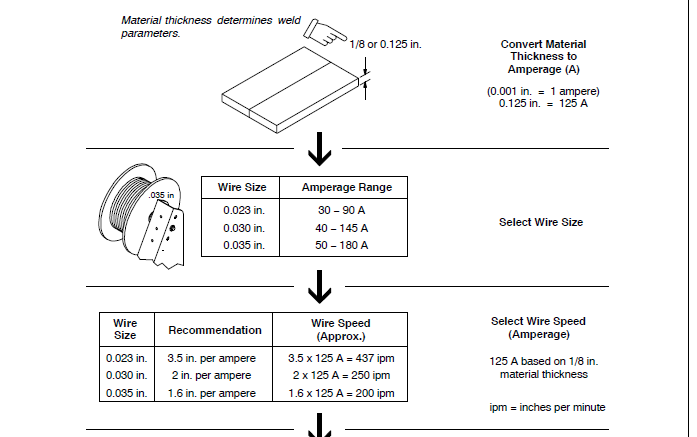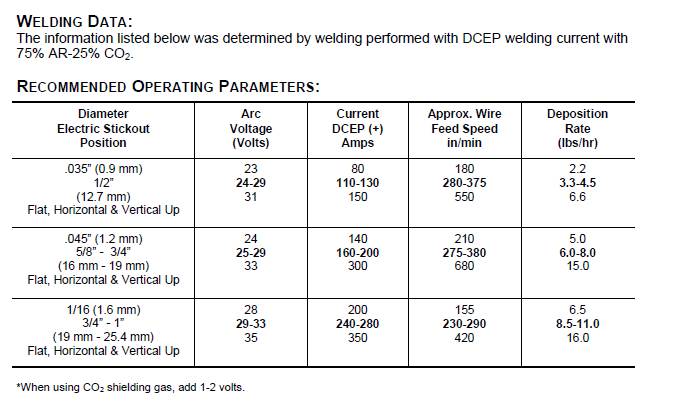
"Keep in mind that not all FCAW electrodes are created equal. The optimum parameters for E71T-1 manufactured by company A and company B are going to be different. So, if one changes to a different manufacturer, the parameters will have to be changed for optimum performance.
Setting the FCAW machine by the seat of your pants is one of the easiest ways of getting into trouble. I've seen it happen time and time again. Use the manufacturer's recommended ranges and start with the parameters they define as optimum."
I agree Al...
And the same goes for stainless steel FCAW electrodes or any other FCAW electrodes for that matter because of the various combinations and amounts of different chemical compositions that make up what is in the core of the electrodes which is the flux... One manufacturer is not going to have an identical chemical composition of another manufacturer of FCAW electrodes... They may be similar but, not identical as I can attest to that from using donated spools of FCAW electrodes from a variety of donors @ the schools I used to teach in.
I also agree that the OP shouldn't have such concern with respect to Amps/current and you brought up what could be the most important variable that is indeed overlooked regardless as to whether or not you just lectured and demonstrated why this parameter is crucial and must be paid attention to a class of students on the very topic only to observe and witness how fast the information I just shared with them went in one ear and out the other! And this was after they already received the very same information regarding this parameter when we started on GMAW prior to covering FCAW... Although, not all of my students had such lousy retention of the curriculum being taught... Just every once in a while I would have a group of well, let's just say - a little slow and dense who ended up becoming welders once I got through with them...

They all would start to whine about the settings on their power sources and wire feeders and yet totally neglected to observe their CTWD... Once I let them know what they neglected to pay attention to, most of them let out a collective "sigh & Ahahhhh!" along with 2 or 3 who would say: " you see, I told you so!" And talk about the questions about why two spools of FCAW wire would weld differently with identical welding parameters yet, from different manufacturers... Some of them would suggest that I carry only one brand to avoid any confusion in the shop when practicing FCAW and I would respond; " Well now, do you really think that every business is going to use the very same brand manufacturer of FCAW wire out in the real world?" And their reply would be silent with a deer in the headlights look and maybe an Ahah! every once in a while.



But they learned and most of them did very well for themselves... Excellent description and explanation Al as usual.
Respectfully,
Henry



 . I know about watts but you have to know the volts and amps to come up with watts. A watt is a unit of power, what the electric company charge us for. I know it takes so many amps (theoretically) to burn one inch of wire (GMAW) knowing what the IPM for the wire feed would give you an approximation of amps, right?
. I know about watts but you have to know the volts and amps to come up with watts. A watt is a unit of power, what the electric company charge us for. I know it takes so many amps (theoretically) to burn one inch of wire (GMAW) knowing what the IPM for the wire feed would give you an approximation of amps, right?











 [img]
[img]














 [/img]
[/img]